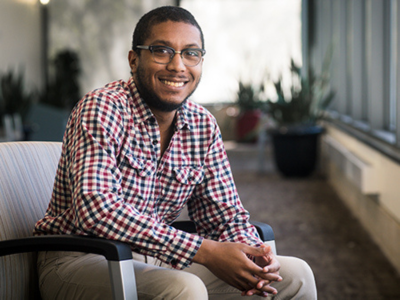 Xavier Horton made history in February 2019 by becoming the first patient in Alabama and the 27th in the nation to undergo deep brain stimulation (DBS) as a treatment for epilepsy.
Xavier Horton made history in February 2019 by becoming the first patient in Alabama and the 27th in the nation to undergo deep brain stimulation (DBS) as a treatment for epilepsy. Horton, who had battled epilepsy for many years, was introduced to DBS by the UAB neurology team in 2016 when the procedure was still in its experimental stage. Initially approved for Parkinson's disease in 1997, DBS has gradually expanded as a viable treatment option for conditions such as dystonia and drug-resistant obsessive-compulsive disorder. In 2018, DBS was approved as a therapeutic approach for epilepsy.
The DBS procedure involves the precise insertion of slender electrodes into the anterior thalamic nucleus in both brain hemispheres. These electrodes are connected to a neurostimulator implanted in the patient's chest, similarly to a pacemaker, by wires. By delivering controlled electrical currents, the neurostimulator disrupts the abnormal electrical activity responsible for triggering seizures, interrupting the impulses before they can develop into epileptic events.
Jerzy Szaflarski, M.D., Ph.D., professor in the UAB Department of Neurology and epilepsy division director, explains the rationale behind targeting the anterior thalamic nucleus saying, "The path of the electrical impulses that trigger seizures frequently passes through the anterior thalamic nucleus, so it's the most appropriate target to intercept and modify those impulses via the current from the stimulator."
Detailing the advanced techniques used in the DBS surgical process, Nicole Bentley, M.D., assistant professor in the Department of Neurosurgery, said, “We employ new techniques of magnetic resonance imaging for planning and targeting the nucleus in our surgical approach. We utilize innovative magnetic resonance imaging techniques for planning and precisely targeting the nucleus during the procedure. By merging the MRI images with a CT scan performed in the operating room, we can ensure optimal electrode placement for maximum effectiveness.”
During the procedure, a DBS lead is implanted into the brain’s two hemispheres. Each of the leads have four contacts that can be adjusted in power and intensity, allowing for thousands of possible combinations to create the optimal pattern of electrical activity for each patient, to alleviate their seizures. The system is activated and fine-tuned after the surgery.
Horton has frontal lobe epilepsy, which causes frontal onset seizures. Before his procedure, Horton said, “These are small seizures, and I might have several a month. They might last a few seconds, or last for more than a minute.” The unpredictability of his seizures made it difficult for him to maintain employment and drive a car.
Dr. Szaflarski anticipated a 60 to 70 percent reduction in Horton’s seizures, stating, “If he has five a month, the DBS system might reduce that to just one per month. There is evidence that the repeated application of the current over time could also reduce the number of seizures even more.”
It is important to note that DBS is not a suitable treatment for all epilepsy patients; however, it is a promising option for those who have exhausted other avenues.
"It's not a cure in most cases, but it is an option for treatment," Bentley said. "Medication is the first treatment. If that fails and seizures cannot be localized to one specific area, DBS surgery may be an option. For some patients, there are no other viable options."
DBS is not the only technology that uses neurostimulation to treat epilepsy. VNS stimulates the vagus nerve in the neck and does not involve brain surgery. RNS uses leads implanted at the site of seizure onset, with the battery implanted in the top of the skull to produce electrical pulses when seizure activity is noted.
DBS is not the only neurostimulation technology used for epilepsy treatment. Vagus nerve stimulation (VNS) stimulates the vagus nerve in the neck and does not require brain surgery, and responsive neurostimulation (RNS) delivers electrical pulses when seizure activity is detected through leads implanted at the site of seizure onset.
"I've had a lot of restrictions in the past," said. "I'm hoping that DBS will allow me to start doing those things -- get a job and a career, move out from my parents. This is a good start."